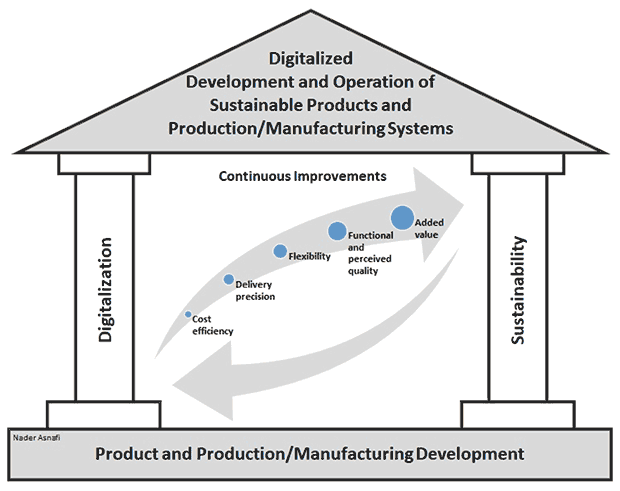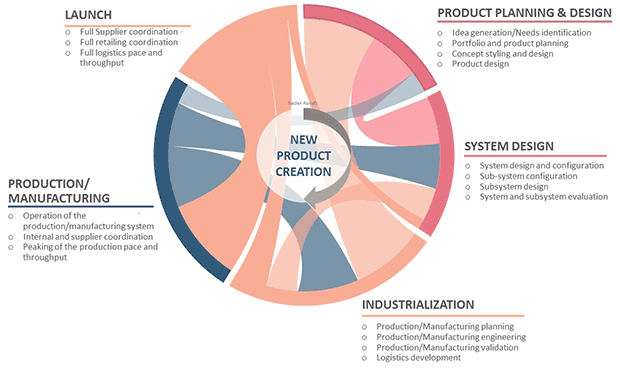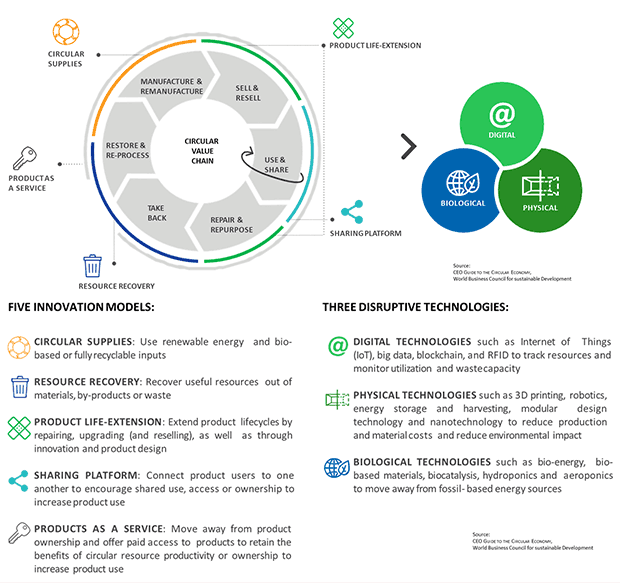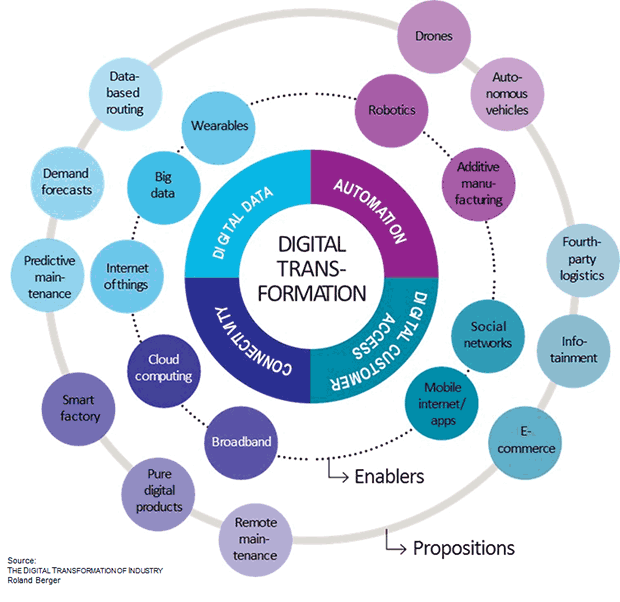Strategy
Digitalized Development and Operation of Sustainable Products and Production/Manufacturing Systems
Mechanical Engineering is the application of science and technology to develop products and services, and production/manufacturing methods and systems required to create these products and services. The requirements include commonly sustainability (for instance environmentally friendliness), functionality (load bearing properties, weight, size etc.), aesthetics, production cost and time, functional and perceived quality, efficiency and effectiveness, maintainability, reliability and availability.
The mechanical engineering field requires an understanding of core areas including mechanics, dynamics, thermodynamics, materials science, structural analysis, and electricity. In addition to these core principles, mechanical engineers use tools such as computer-aided design (CAD), computer-aided manufacturing (CAM), and product life cycle management to design and analyze manufacturing plants, industrial equipment and machinery, heating and cooling systems, transport systems, aircraft, watercraft, robotics, medical devices, weapons, and others. It is the branch of engineering that involves the design, production, and operation of machinery.
Mechanical Engineering is strongly related to aerospace engineering, automotive engineering, virtual engineering, manufacturing engineering, and industrial engineering, and overlaps with other engineering disciplines, such as for instance computer engineering and electrical engineering, to varying amounts.
Figure 1.

Therefore, Product and Production/Manufacturing Development constitutes the foundation in our strategy and daily operations. Since 2016, the ultimate purpose for Mechanical Engineering at Örebro University is to create an environment focused on Digitalized Development and Operation of Sustainable products and Production/Manufacturing Systems. To do so, the foundation – Product and Production/Manufacturing – is combined with two pillars – Sustainability and Digitalization. This environment comprises both education and research and addresses both greater shifts and continuous development, Figure 1.
The phases in a new product creation process are highly interrelated, Figure 2. Our targeted environment has the knowledge, skills and collaborative capabilities required to understand the significance of these interrelations, and find the needed solutions itself and/or solve the addressed issues in collaboration with companies and other universities.
Figure 2.

Sustainability constitutes one of the two pillars in our strategy and operations, Figure 1. The vision and pathway outlined by World Business Council for Sustainable Development, which complies fully with the United Nations Sustainable Development Goals, is therefore the beacon for our strategy and operations. This pathway, a four- to tenfold improvement of the resource/material efficiency until 2050, eco-efficiency, eco-effectiveness, and new business models (generated by new innovation approaches) are thereby naturally included in our daily work.
The sustainability pillar, Figure 1, is based on circular economy (and thereby green industrial and biological lifecycles) and comprise five innovation models/approaches and three disruptive technologies. These innovation models/approaches and disruptive technologies are illustrated and described in Figure 3.
Figure 3.
Circular economy: Five innovation models and three disruptive technologies

Digitalization constitutes the second pillar in our strategy and operations, Figure 1. Besides CAE, virtual engineering, virtual manufacturing engineering, simulation and optimization, digitalization embraces chiefly the industrial transformation caused by automation, connectivity, digital data, and digital customer access. These four levers are supported by a number of enablers and propositions, Figure 4. Although all of these enablers and propositions are at the focus in our daily operations, robotics, additive manufacturing, cloud computing, internet of things, big data, drones, autonomous vehicles, logistics and control towers, remote and predictive maintenance, and smart factory are paid special and extended attention.
Our contribution to facilitation of the industrial transformation is not only limited to research and development. All courses in undergraduate, graduate and Ph D student programs will be affected by the topics mentioned above. A new master program will be initiated in which digitalized development and operation of sustainable products and production will be at the focus.
Figure 4.

Internal, external, cross-functional, and cross-scientific collaboration is of great significance, since our operations have a holistic approach. Collaboration with other units and faculties at Örebro university, companies, other universities and institutes, both nationally and internationally, is therefore a natural ingredient, as our R&D projects, education programs, courses, workshops, seminars, conferences are outlined and conducted.
For more information and discussion, please contact Professor Nader Asnafi or Professor Magnus Löfstrand, head of research subject.
